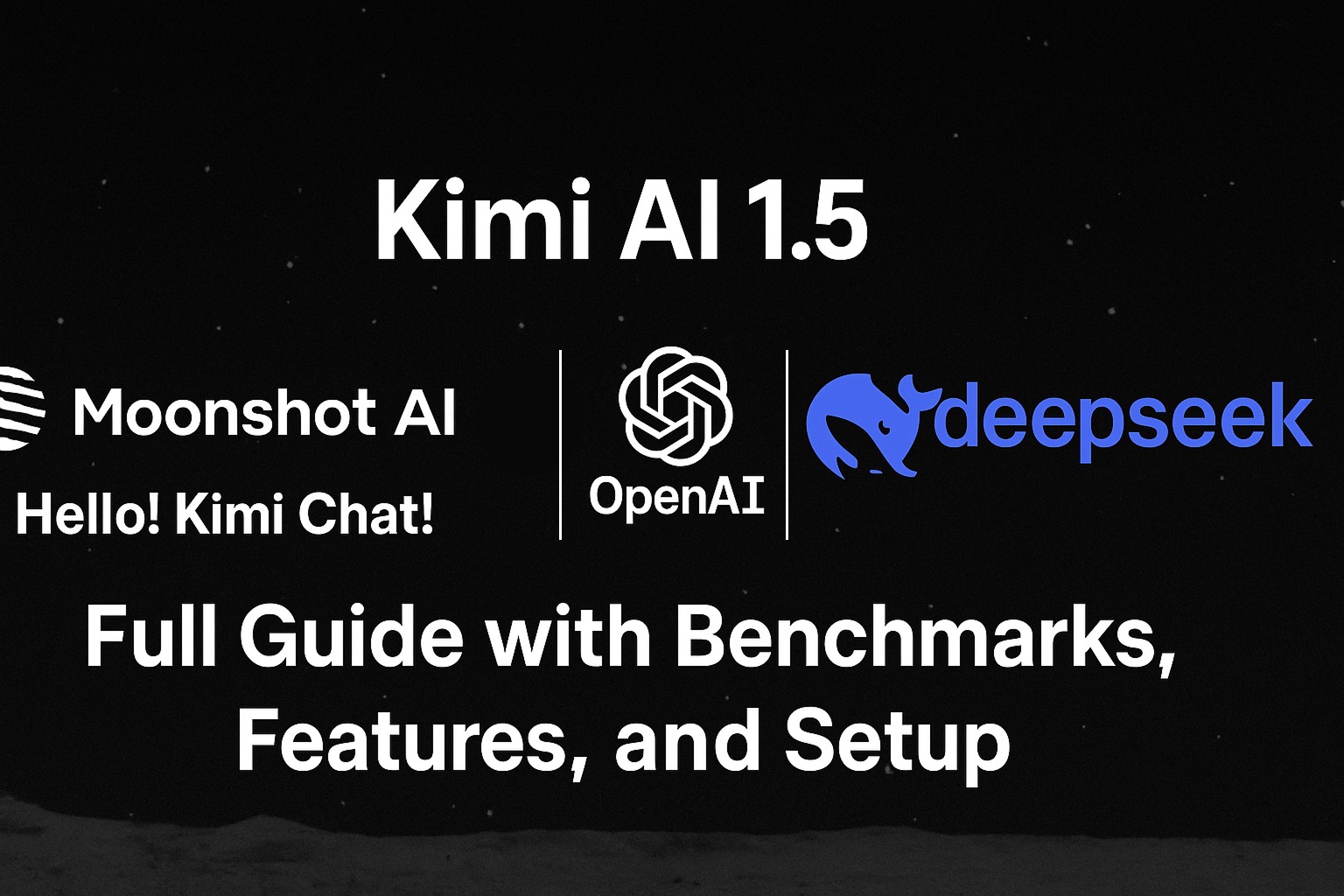Artificial Intelligence is evolving rapidly, and China’s Moonshot AI has taken a bold step forward with the launch of Kimi AI 1.5, a powerful open-source model that is giving established giants like ChatGPT and DeepSeek R1 some serious competition. In this guide, we’ll dive deep into Kimi AI’s features, benchmark comparisons, how to use it via the web or locally through Docker, and more.
What is Kimi AI?
Kimi AI 1.5 is a free-to-use AI model developed by Moonshot AI, a Chinese AI company. The model is gaining traction for its powerful performance in math, code generation, document processing, and general tasks. According to benchmark tests, Kimi AI outperforms or matches the capabilities of models like ChatGPT (GPT-4) and DeepSeek R1 across multiple parameters.
Benchmark Comparison: Kimi AI vs ChatGPT vs DeepSeek
Kimi AI shows impressive results across different domains:
Mathematics: Outperforms ChatGPT and DeepSeek.
Coding: Generates better quality code snippets and solutions.
Document/Image Processing: Comparable to existing top models.
General Chat: Fast and accurate conversational abilities.
These scores indicate a significant rise in Chinese AI development, giving users more powerful free alternatives in the generative AI landscape.
How to Access Kimi AI on the Web?
Accessing Kimi AI is simple for most users outside India. Here’s how:
Visit kimi.moonshot.cn (note: the site may require a VPN if you’re in India).
Use the interface just like ChatGPT — ask questions, generate code, or create content.
You can also upload files for document-based queries (requires login, not accessible in India).
⚠️ Note: As of now, Indian phone numbers are not supported for registration.
Running Kimi AI Locally via Docker
If you’re a developer and want to run Kimi AI locally, Moonshot AI has provided a Docker deployment method.
Prerequisites:
Install Docker: Download Docker Desktop
Verify installation:
docker --versionDeployment Steps:
- Clone the GitHub repo:
git clone https://github.com/username/kimi-ai.git2. Navigate to the repo and run:
git clone https://github.com/username/kimi-ai.git3. Access the server at http://localhost:8000
The image will automatically be pulled and deployed on your local system.
Testing Kimi AI with Python & REST API
Although official API documentation is not yet available, enthusiasts have found a way to test responses using Python:
import requests
url = "http://localhost:8000/ping"
response = requests.get(url, timeout=5)
print(response.text) # Should return: "ping pong"
This confirms your server is live. For chat functionalities, the /v1/chat/completions endpoint seems to be in use, although it’s unstable without a proper API token.
Testing Kimi AI with Python & REST API
You can inspect the browser’s local storage to get access tokens:
Open the Kimi AI web app.
Ask a question.
Right-click → Inspect → Application tab → Local Storage.
Find the
anonymous_access_tokenoranonymous_refresh_token.
While these tokens can be experimented with in Python, they are unofficial and may break anytime.
Limitations and Issues
No Indian user support for sign-up.
No official API documentation (as of now).
API access is unstable and not recommended for production
Final Thoughts
Kimi AI 1.5 is a game-changer — it offers an impressive alternative to ChatGPT and DeepSeek R1, especially in terms of performance and access flexibility. While users in India face access challenges, developers can still deploy it locally and experiment via Docker.
As China continues to innovate in the AI space, tools like Kimi AI mark a significant shift in global AI development trends. We expect official API support and wider availability soon, so keep an eye out.





3 Comments
Aayush Dua
Really insightful breakdown! I hadn’t heard much about Kimi AI 1.5 before this, but the benchmarks and feature comparison you shared really highlight how it’s emerging as a serious contender. Appreciate the detailed setup guide too — makes it much easier to explore hands-on. Great work!
mackstroke.com
Thanks Ayush! for the valuable feedback, It really motivates to do more.
Aayush Dua
You’re most welcome, Manoj! I’m really glad to hear that my feedback motivates you. Keep up the amazing work—looking forward to seeing more from you!